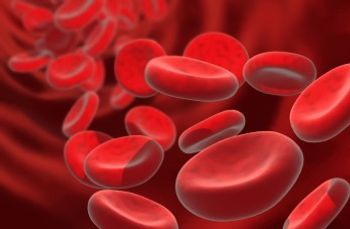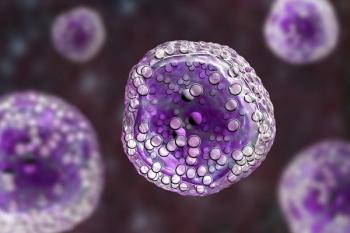
Ibrutinib Represents Possible New Treatment Option for Pretreated Hairy Cell Leukemia
Results of a phase 2 trial show that ibrutinib was capable of inducing responses in some patients with hairy cell leukemia who were previously treated with standard therapy options in a prior line.
Results of a phase 2 trial (NCT01841723) examining patients with relapsed classic or variant hairy cell leukemia (HCL) indicate positive responses and favorable progression-free survival (PFS) outcomes with daily ibrutinib (Imbruvica) therapy, according to data published in Blood.1
Although the study failed to meet the primary end point of objective response rate (ORR) at 32 weeks with a prespecified threshold of 50%, the rate of responses occurring any time after the start of ibrutinib was 54% (95% CI, 37%-71%).
“There is a critical unmet need for therapy options in this subset of patients to achieve long-term cancer control,” principal investigator Kerry A. Rogers, MD, of The Ohio State University Comprehensive Cancer Center - Arthur G. James Cancer Hospital and Richard J. Solove Research Institute, said in a press release.2 “Our study shows that ibrutinib is a safe, effective, and well-tolerated option for patients with relapsed or variant forms of hairy cell leukemia. It is a very important discovery for patients facing this diagnosis.”
The multicenter, open-label, single-agent, 2-stage design National Cancer Institute (NCI) study looked at ibrutinib efficacy in 37 patients with relapsed HCL who were treated at either the 840-mg dose (n = 13) or the 420-mg dose (n = 24) at a median follow-up duration of 3.5 years (range, 0-5.9 years).
ORR at week 32 was 24% (95% CI, 12%-41%) and increased to 36% (95% CI, 21%-54%) by week 48. At the 32-week timepoint, 1 patient had a complete response (CR), 8 had a partial response (PR), 21 had stable disease (SD), 3 had progressive disease, and 4 did not undergo assessment due to discontinued treatment or death.
When looking at any time during the study period, the best response was a CR in 7 patients, PR in 13, and SD in 10, with responses being consistent in both classic and variant disease subtypes. Three patients achieving a CR were minimal residual disease negative.
The median PFS was not reached in this patient population and the rate at 36-months was 73%, with no statistically significant difference noted by histologic subtype (P = .88) or dose level (P = .24). The median overall survival (OS) was 69 months with a 36-month rate of 85%. Similarly, no statistically significant difference in OS was noted by histologic subtype (P = .76), or dose level (P = .95).
Hematologic adverse effects (AEs) of note included anemia in 43% of patients, 5% of which were grade 3 or greater; thrombocytopenia in 41%, 22% of which were grade 3 or greater; neutropenia in 35%, of which 22% were grade 3 or greater. Common nonhematologic AEs included diarrhea (59%), fatigue (54%), myalgias (54%), nausea (51%), upper respiratory tract infection (46%), and bruising (43%). Seven patients discontinued treatment because of AEs.
The investigators noted that most patients were heavily pretreated, and a majority did not have significant benefit with purine analogs, which represent the standard of care in this disease.
“Even though hairy cell leukemia is a disease with a generally good prognosis, there is a small group of patients for whom current therapies are inadequate for cancer control,” Rogers said. “This is an effective, well-tolerated new treatment option for patients impacted by the highest-risk forms of hairy cell leukemia. It's a very exciting development that could transform survivorship for this subset of patients from months and years to years and decades.”
References
1. Rogers KA, Andritsos LA, Wei L, et al. Phase 2 study of ibrutinib in classic and variant hairy cell leukemia. Blood. 2021;137(25):3473-3483. doi:10.1182/blood.2020009688
2. Study: Ibrutinib effective treatment for difficult to treat forms of hairy cell leukemia. News release. Ohio State University Wexner Medical Center. July 21, 2021. Accessed July 22, 2021. https://bit.ly/3kMNd4T
Newsletter
Stay up to date on recent advances in the multidisciplinary approach to cancer.


















































































